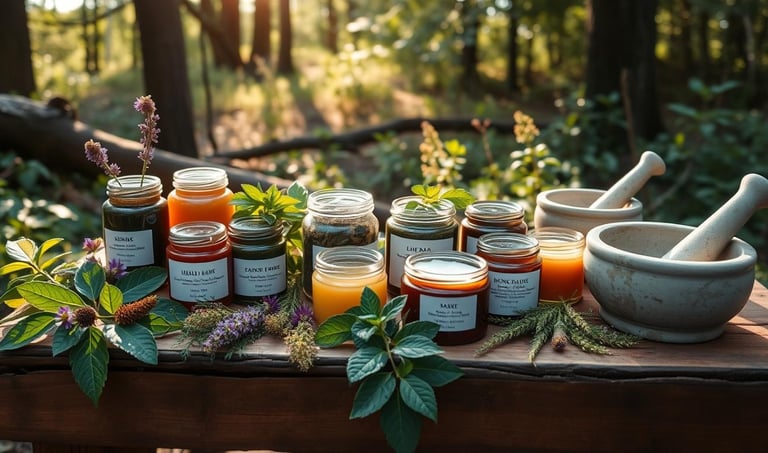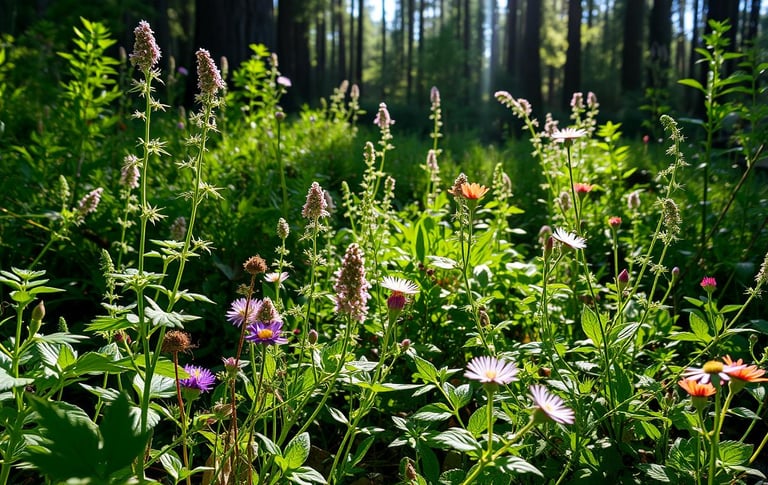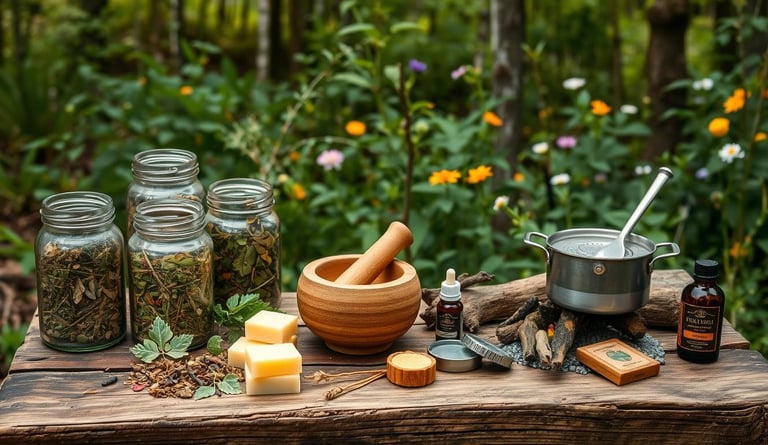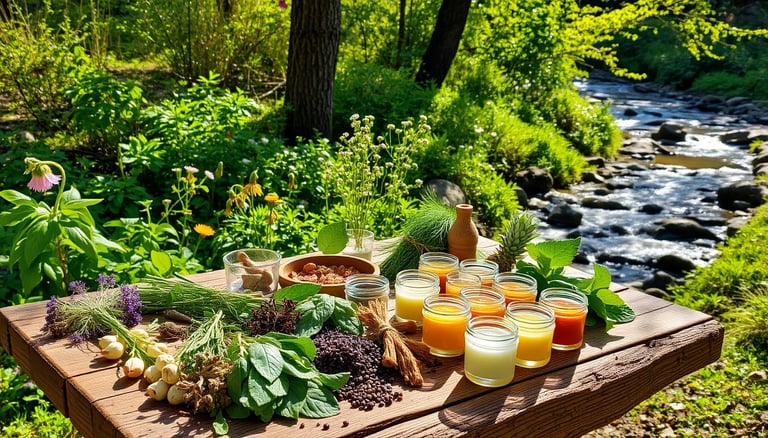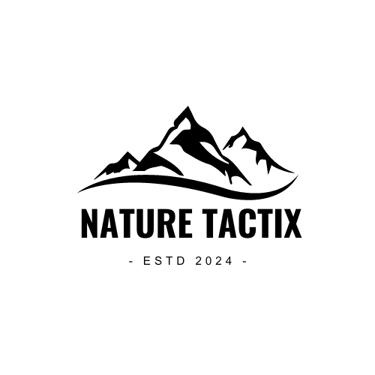
Creating Herbal Balms and Salves for Wilderness Survival
Discover the art of making herbal balms and salves to enhance your wilderness survival skills with natural remedies and wildcrafting techniques.
HERBALISM
Kathrine-Anne Hill
1/18/202511 min read
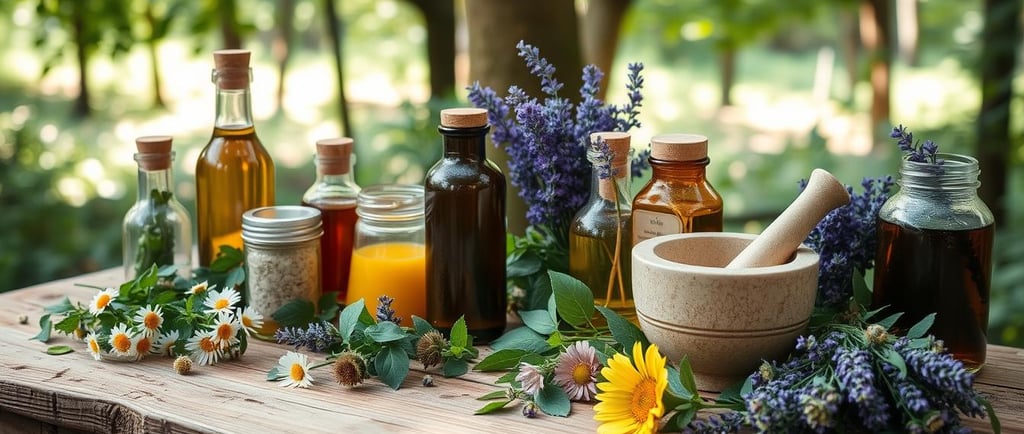

Creating Herbal Balms and Salves for Wilderness Survival
I often think back to a camping trip when a simple salve saved my life. The wilderness is both beautiful and tough. It needs more than just courage; it needs preparation and knowledge. Making herbal balms and salves is key for survival.
Herbal remedies are more than just useful. They are a lifeline that connects us to nature's healing powers. Let's explore how to make your own salves. This skill can help you with natural first aid on your adventures.
I've learned that the right mix of wild plants can help us in the wild. A cottonwood salve can soothe rough skin, and cleavers can cool insect bites. Nature has amazing healing powers. Let's dive into this craft together, blending knowledge with hands-on skills.
Affiliate Disclosure:
Please note that some of the links in this article are affiliate links. This means that if you click on these links and make a purchase, I may receive a small commission at no additional cost to you. This commission helps support the maintenance and growth of this website and allows me to continue providing valuable information and recommendations. Rest assured, I only recommend products and services that I have personally used or thoroughly researched. Your support is greatly appreciated! For full disclosure see our Privacy Policy and Terms and Conditions here.
Key Takeaways
The best times to gather cottonwood buds for salve making are February and March.
Cottonwood trees thrive near rivers and in moist forests, making them valuable in wilderness survival.
To make cottonwood oil, infuse buds in olive oil for two to twelve months.
A good cottonwood salve recipe uses 1 cup of cottonwood oil and 1/4 cup of shaved beeswax.
Herbal remedies can help with allergies and insect bites on outdoor adventures.
Custom herbal kits can change with the seasons and where you are.
Having essential medications ready is important for safety in nature.
Understanding Herbal Salves and Balms
I learned about herbal salves in my search for natural remedies. They are thick ointments made from oil and wax. These ointments are filled with healing herbs.
Herbal salves are different from balms and creams. They have no water. This makes them thick and good for sticking to the skin.
What is a Herbal Salve?
Herbal salves mix oils with herbs like Yarrow, Willow, and Plantain. Yarrow helps stop bleeding and relieves pain. Willow has anti-inflammatory effects like aspirin.
Plantain treats wounds because it fights bacteria. These herbs help heal many problems like boils and rashes. Making the salve involves simmering the herb-infused oil for 20-30 minutes.
Difference Between Salves, Creams, and Lotions
Knowing the difference between salves, creams, and lotions helps me use natural remedies better. Salves are thick and don't have water. They last longer and protect the skin better.
Creams and lotions are lighter because they have water. They are better for keeping the skin moist. Creams might have extra stuff like emulsifiers. Salves use natural ingredients like beeswax for their texture.
Adding essential oils and herbs to my salve makes it work better. The right mix of herbs heals and meets specific needs. Learning about the difference between salves and creams helps me use natural remedies better.
Importance of Herbal Remedies in Wilderness Medicine
Herbal remedies are key in wilderness medicine when doctors are far away. They help with cuts, burns, and bites. These natural treatments use plants to heal, making it easy to treat injuries in nature.
How Herbal Salves Serve as Natural First Aid
Knowing natural first aid is vital in the wild. Herbal salves, made from wild plants, help a lot. For example, yarrow stops bleeding and reduces swelling.
Willow bark relieves pain like aspirin. Dandelion leaves help with hunger and can help with water issues too.
The Role of Wildcrafting Herbs
Wildcrafting herbs connects us more to nature. I forage for plants like echinacea and elderberry. They help with colds and have anti-inflammatory effects.
Using these herbs in my salves makes them effective and connected to nature.
Creating Herbal Balms and Salves for Wilderness Survival
In wilderness survival, making herbal balms and salves is key. Knowing what goes into herbal salves helps me make remedies for outdoor ailments. These include olive oil or fat, beeswax, and medicinal herbs. You can also include many different additives, like essential oils for more benefits.
Key Ingredients for Making Herbal Salves
For herbal salves to work well, certain ingredients are needed. Here's what's important:
Olive oil or rendered fat: It's the base, soaking up the herbs' healing powers.
Beeswax: It makes the salve thick and protects the skin.
Medicinal herbs: Like yarrow, plantain, and cottonwood, each with its own healing benefits.
Commonly Used Medicinal Herbs
Some herbs are used a lot in herbal salves. For example:
Yarrow: Stops bleeding, heals wounds, and fights germs and swelling.
Plantain: Used for thousands of years, it fights germs and heals wounds.
Self-heal: Helps with skin problems, cuts, and infections, even viruses.
Cottonwood buds: Best in February and March, great for oils.
Safety and Precautions in Herbal Salve Making
When making herbal salves, safety is very important. Here are some key steps:
Keep your workspace clean to avoid germs.
Store herbs and oils right to keep them strong and safe.
Do a skin test before using any new herbal mix.
By knowing these important details, I can make herbal balms and salves. They help heal and soothe, adding to my survival kit.
Gathering and Preparing Herbs
Foraging wild herbs in Canada lets me connect with nature. I find medicinal plants and enjoy the beauty around me. It's important to do this in a way that doesn't harm the environment.
By following ethical foraging, we help keep these plants for future generations. This way, we can use them for wellness and natural remedies.
Foraging for Wild Herbs in Canada
I look for herbs that grow well in my area. I start by checking local spots first. This helps me gather with less harm to plants.
Knowing when plants are at their best is key. This means picking them in the right seasons for the best health benefits.
Harvesting Guidelines and Ethical Considerations
Responsible harvesting is key for ethical foraging. I always leave some plants to grow again. This helps the plants and the environment.
Here are some important rules:
Gather only what you need and respect the plants' home.
Make sure you know what you're picking to avoid harming the ecosystem.
Pick plants when they're at their strongest.
Being part of the herbalist community helps me know what to look for. I choose to buy from big herbal businesses that follow good practices. This way, I get the best herbs for my health.
Talking with others online has also helped me. We share tips on foraging wild herbs in Canada.
Step-by-Step Guide to Making Herbal Salves
Making herbal salves at home is fun and rewarding. It's all about following a step-by-step herbal salve making guide. Knowing what you need and how to infuse herbs is key.
Essential Equipment and Supplies Needed
Having the right tools is important for making herbal salves. Here's what I always have:
Double boiler for gentle heat.
Clean glass jars for storing.
Cheesecloth for straining herbs.
Measuring spoons and cups for accuracy.
Essential oils for extra benefits and smell.
A knife or grater for beeswax.
Infusion Methods: Cold vs. Hot Infusion
Choosing the right way to infuse herbs matters. I use these infusion methods:
Cold Infusion Method: Steeping herbs in oil for weeks. It's gentle.
Hot Infusion Method: Heating herbs in oil for hours. It's quicker for tough herbs.
Intermediary Method With Alcohol: Quick infusion for busy times.
Recipe for a Basic Herbal Salve
Here's a simple basic herbal salve recipe:
4 oz. of your favorite herbal infused oil.
1 oz. of beeswax (adjust for thickness).
10-20 drops of essential oil for smell and healing.
Melt the beeswax in a double boiler. Slowly add the infused oil until mixed. Remove from heat, add essential oils, and pour into jars. It lasts up to three years.
Utilizing Your Herbal Salve in the Wilderness
Herbal salves are key when you're in the wild. They can help a lot in survival situations. I've seen how they can quickly fix many problems.
When to Use Herbal Salves for Outdoor Survival
Herbal salves are great for outdoor fun. They work well in many situations. Here's when to use them:
Minor Cuts and Scrapes: Small injuries happen often. A soothing salve is a must-have.
Burns: Burns from the sun or accidents need quick relief. Salves help heal.
Bug Bites: Insects are everywhere. Salves ease itching and swelling.
Sore Muscles: After hiking, salves relax muscles and soothe.
Specific Uses: Bites, Burns, and Cuts
My herbal salve has many uses. It's because of the special ingredients. For example, cottonwood oil is great for:
Minor Burns: It calms irritated skin.
Bites: It reduces swelling and itchiness.
Cuts: It helps wounds heal and prevents infection.
I often use my salve when I don't have other first aid. The mix of ingredients works well for many skin problems. Always carry herbal salve on outdoor trips.
Enhanced Techniques for Advanced Herbalists
I'm learning new ways to make herbal remedies better. This is exciting when I make special blends for different needs. It helps me make sure my remedies work well.
Creating Customized Herbal Blends
It's key to know what each herb does. I look at old books and new guides to pick the right ones. For example, mixing chamomile with calendula makes a great skin cream.
Here are some tips for blending herbs:
Match the effects: Make sure the herbs work well together.
Consider the scent: The smell of herbs can change how they work.
Experiment gradually: Start small to get the blend just right.
Experimenting with Essential Oils in Salves
Adding essential oils to salves is very exciting. These oils make the salves even better for healing. I make sure to mix them right so they're safe and effective.
For using on the skin, a good mix is 1% essential oil.
Recommended Products
Elevate your homemade salves by adding Apex Botanicals' goldenseal and licorice powders. Goldenseal powder is celebrated for its anti-inflammatory and antimicrobial benefits, while licorice powder works to soothe and brighten skin—together creating a potent blend that nurtures and revitalizes your skin naturally.
Apex Botanicals Goldenseal Powder
Apex Botanicals Licorice Powder
Or view all of Apex Botanicals products.
Resources for Further Learning
If you want to learn more about herbalism, there are many resources to check out. You can find books and online workshops that teach you about making herbal balms and salves. These resources can help you get better at what you do.
Books and Online Workshops on Herbalism
Books are a great place to start learning about herbal remedies. They cover topics like foraging, how to prepare herbs, and their health benefits. Online workshops let you learn by doing, with help from experts like Kathi Keville and Tieraona Low Dog.
My eBook, "Soothing Potions: Crafting Effective Herbal Salves, Balms, and Poultices" is a comprehensive guide that walks you through creating soothing remedies for everything from dry skin to minor wounds, using nature's finest ingredients. Get your copy today and start crafting your own effective herbal remedies!
Community Resources for Wildcrafting Herbs
Being part of a wildcrafting community is very helpful. You can learn from others who know a lot about herbs. They have events and workshops where you can practice gathering herbs the right way. It's a chance to meet people who love herbalism and wildcrafting as much as you do.
Conclusion
As we finish this article on herbal balms and salves for wilderness survival, it's key to talk about herbal remedies. These natural solutions help us face emergencies in the wild with confidence. By learning about wilderness medicine, we can make our outdoor adventures better, turning problems into chances to grow and heal.
Even with little space, we can grow medicinal herbs. One plant can make enough for a 4 oz bottle of tincture. This shows that we can all have access to these plants. Using native plants helps us fit in with the local climate and makes the ecosystem stronger.
In short, herbal balms are important for wilderness survival, making us more ready for any adventure. I suggest everyone try these practices and join the wildcrafting spirit. Learning from nature makes our trips safer, richer, and more rewarding.
Related Posts:
Natural Herbal Remedies for Pain Relief: A Gentle Approach
Natural Remedies for Common Wilderness Injuries
FAQ
What are herbal salves and how are they made?
Herbal salves are special ointments. They mix oils and wax with herbs for healing. They're thick, so they stick to your skin well.
To make them, you need olive oil, wax, and herbs. These ingredients help heal your skin.
How do herbal salves differ from creams and lotions?
Salves are thicker than creams and lotions. They don't have water or butters. This makes them stay on your skin longer.
They protect your skin and use herbs to heal.
Why are herbal remedies important in wilderness medicine?
Herbal remedies are key in the wild. They help when you can't see a doctor. Salves can fix small injuries like cuts and burns.
They're great for surviving outdoors.
What are some common medicinal herbs used in salve making?
Yarrow, willow, plantain, and garlic are common herbs. They help with different health issues. They're good to know for making salves.
What safety precautions should I take when making herbal salves?
Keep your workspace clean and store salves right. Use clean tools and containers. Store them in a cool, dry place.
How can I ethically forage for wild herbs in Canada?
Forage responsibly by respecting plants and knowing when to pick them. Leave enough for other plants to grow. This helps nature.
What supplies do I need to make herbal salves at home?
You'll need a double boiler, jars, cheesecloth, and herbs. Having these makes making salves easy. It lets you try new herbal remedies.
When should I use herbal salves in outdoor settings?
Use them for bug bites, minor burns, and cuts. Knowing what each herb does helps. This makes your salves more effective.
How can I create customized herbal blends for my salves?
Mix herbs to meet your needs. You can also add essential oils. Just remember to use them safely and correctly.
What resources are available for learning more about herbalism?
There are books, online classes, and events for learning herbalism. They can help you make better herbal balms and salves.
Source Links
How to Make Cottonwood Salve - https://www.wildernesscollege.com/cottonwood-salve.html?srsltid=AfmBOorVRyVdZdnlL8gbdfUTqJt2CP9b1exh2ahBQnI2udu4h4Y2zWqU
Make an Herbal First Aid Kit - https://www.whollyrooted.com/blog/herbal-first-aid-kit-dayweekend-prep
Cleavers Ointment - https://blog.woodland-ways.co.uk/hedgerow-medicines/cleavers-ointment/
The Perfect Wilderness Salve - Sigma 3 Survival School - https://survivalschool.us/the-perfect-wilderness-salve/
How to Make an Herbal Salve – Wolf Camp, Blue Skye Farm & School of Natural Science - https://www.wolfcollege.com/herbal-salve/
Survival Skills: 14 Wild Medicinal Plants - https://www.outdoorlife.com/blogs/survivalist/2014/05/survival-skills-14-wild-medicinal-plants/
Wild herbs: Superfood right at your doorstep - https://ebike-mtb.com/en/edible-wild-herbs-as-superfood/
Top Native Plants To Learn for Herbal Medicine: Part 2 of 2 – Flowering Plants – Wolf Camp, Blue Skye Farm & School of Natural Science - https://www.wolfcollege.com/top-native-plants-to-learn-for-herbal-medicine-part-2-of-2/
How to Make an Herbal First-Aid Ointment - https://www.learningherbs.com/blog/herbal-first-aid-ointment
How to Make Cottonwood Salve - https://www.wildernesscollege.com/cottonwood-salve.html?srsltid=AfmBOopgnebhfndJPnNJJloxbXqMOPo_RhjqNFSFNzpgRW35dMzYZ9jK
Creating Your Home Herbal Apothecary - https://blog.mountainroseherbs.com/creating-your-home-herbal-apothecary
The Top Ten Medicinal Herbs for the Garden: How to Grow & Use Healing Plants - https://chestnutherbs.com/the-top-ten-medicinal-herbs-for-the-garden/
Beginner's Guide To Making Salves | Homesteading - https://homesteading.com/salves/
The Medicine of Pine - https://chestnutherbs.com/the-medicine-of-pine/
How to Make Cottonwood Salve - https://www.wildernesscollege.com/cottonwood-salve.html?srsltid=AfmBOooYnmWJw6wcSwg_JQ3cN-kSAFln627zV4ZDQa34GqtNMFTdtnGL
Herbal Salves & Balms - https://mountainroseherbs.com/catalog/natural-body-products/herbal-salves?srsltid=AfmBOor4eiDiYI8ek_RPsGD_-PMr-Gt10EQhIn55_72uqFMiQawBgf1A
Herbalism: a Reason to Forage! - The Art of Ecology - https://theartofecology.com/2022/04/07/herbalism-basics/
Wild Edible Foods Foraging & Herbal Medicine Making Workshop - https://wolfcamp.org/classes-workshops/weekend/wild-edible-plants-foraging-and-herbal-medicine-making/
Microsoft Word - Thesis Final Submission.docx - https://escholarship.mcgill.ca/downloads/3t945t23c.pdf
Ethnobotany - Indigenous & First Nations Books - Strong Nations - https://www.strongnations.com/store/item_list.php?it=1&cat=2776&new=1
Herbal Medicine 101: How You Can Harness the Power of Herbs - https://www.healthline.com/health/herbal-medicine-101-harness-the-power-of-healing-herbs
Crafting Yarrow Salve - https://www.outdoorapothecary.com/yarrow-salve/
Herbal Education - https://mountainroseherbs.com/herbal-education/?srsltid=AfmBOopaYtwHUP5ykAnn9zo637_uA5szdRxsapAXCcKVEeMzY0URj0Uk
An Easy Guide To Medicinal Herb Gardening For Preppers - Survival Mom - https://thesurvivalmom.com/herb-gardening-preppers/
Medicinal Herb Garden (Planning and Growing) - https://melissaknorris.com/how-to-plan-a-medicinal-herb-garden/



